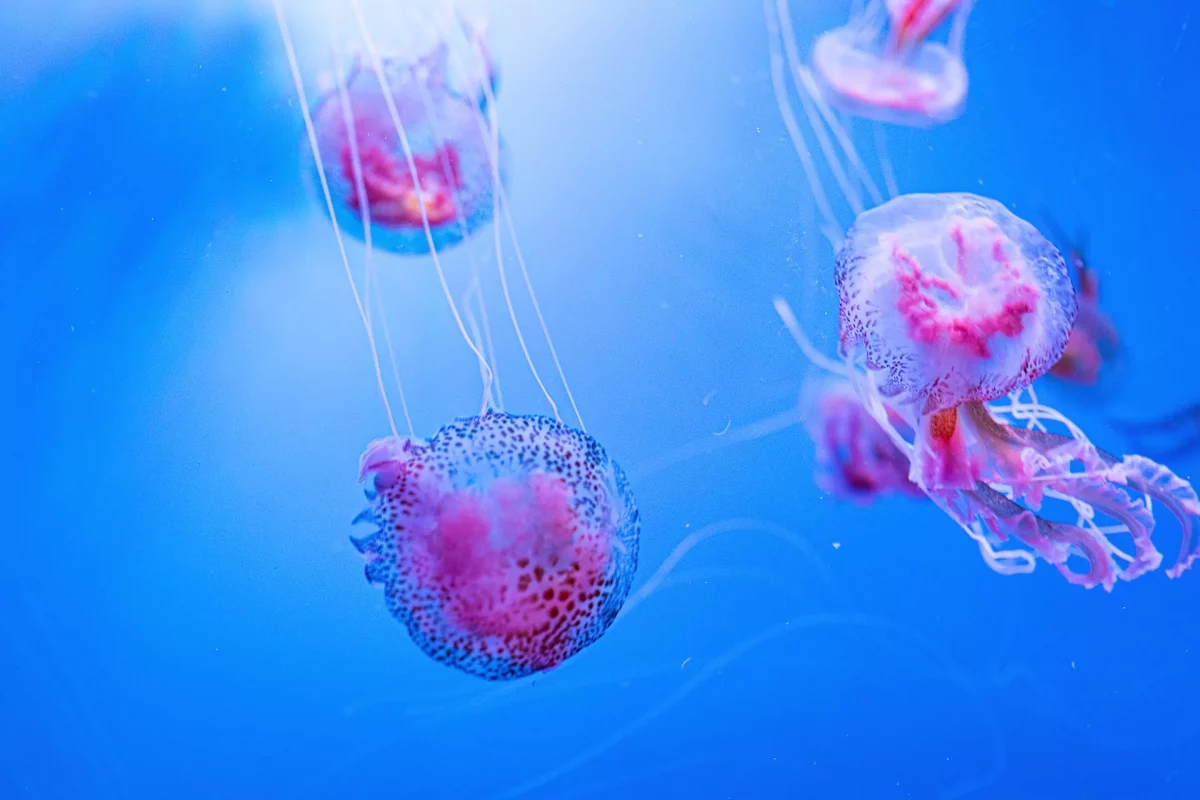Over the last few days, sightings of jellyfish up and down the coast have been proliferating. Here’s what to do if you get stung.
The scourge of local beaches in the summer, jellyfish populations appear to be on the rise. From Menton in the east to La Seyne sur Mer in the west, an ACRI-ST map noting recent sightings in the region is dotted with warnings about the pelagia noctiluca or mauve stinger.
This species is a regular visitor to the French Riviera, particularly in August, when it is fairly common to see swarms of them in the water.
Numbers have been on the rise in recent years, and this is thought to be due to a combination of warmer temperatures, declining natural predators and less competition for food from plankton-eating fish, whose stocks have been depleted from over-fishing.
TOWNS ON THE CASE
Since these sea pests seem to be here to stay, measures are being put in place to safeguard beachgoers from the worst of their effects. Some coastal towns and villages have gone as far as to put up barrier nets in an attempt to keep the bulk of them at bay, such as in Villefranche sur Mer, Cap d’Ail, Saint Jean Cap Ferrat and even Monaco’s Plage du Larvotto. The effect is limited, but it does offer some shield against them.
Another more scientific method is also being put into play. The Oceanological Institute in Villefranche-sur-Mer has a 48-hour forecast, which aims at predicting an influx before the presence of the jellyfish becomes an issue. The predictions are based on an observed link between the breaching, or the shore invading behaviour of the jellyfish, wind and currents.
There is a five-point probability rating system used, with zero being no threat to five, meaning there is a strong likelihood of a jellyfish “invasion”. This early warning system has been helpful for towns who can now alert tourists to a jellyfish risk before they get into the water.
WHAT SWIMMERS CAN DO
Whilst more of a nuisance than a nightmare, getting stung by one of these slippery creatures is still an unpleasant experience and best to be avoided.
Some people have resorted to wearing protective clothing or wetsuits, but let’s be honest, this isn’t ideal when temperatures are in the upper 30s and a suntan is in the making.
Another solution has come in the form of sunscreens containing ingredients that “deactivate” the stinging mechanism of jellyfish tentacles. Medusyl is one brand that is easy to get in France, and has been proved efficient, though there are plenty of others on the market.
IF THE WORST HAPPENS
Sometimes, despite being careful, people get stung. Most people will only experience a certain amount of discomfort, which will fade in a short period of time, but others may feel the effects for up to a month, so quick action is the best way to lessen the after-effects of a sting.
The goal of treatment is to neutralise the nematocysts, the small capsules containing a venomous barb. To do this, and to lessen the pain, there are a few things that can be done. Immersing the area with hot sea water for at least a half hour or pouring vinegar over the sting has been known to help take the burn away faster. If any of the barbs are visible, remove them with tweezers or the edge of a bank card. Applying sand to the affected area and allowing it to dry is another tip suggested by the Prefecture of the Alpes Maritimes.
Contrary to popular myth, urinating on the area does not help, nor does alcohol or dousing the sting with fresh water. Rubbing will only make the pain worse, so avoid this.
Finally, take a painkiller like paracetamol or ibuprofen to reduce any residual discomfort.
Jellyfish need not ruin a beach day, and can be avoided with a bit of vigilance, foresight and preparation!
Make sure you’re never left out of the conversation.
Sign up for the Monaco Life newsletter, and follow us on Facebook, Twitter, Instagram and LinkedIn.
Photo source: Jane Ta, Unsplash
